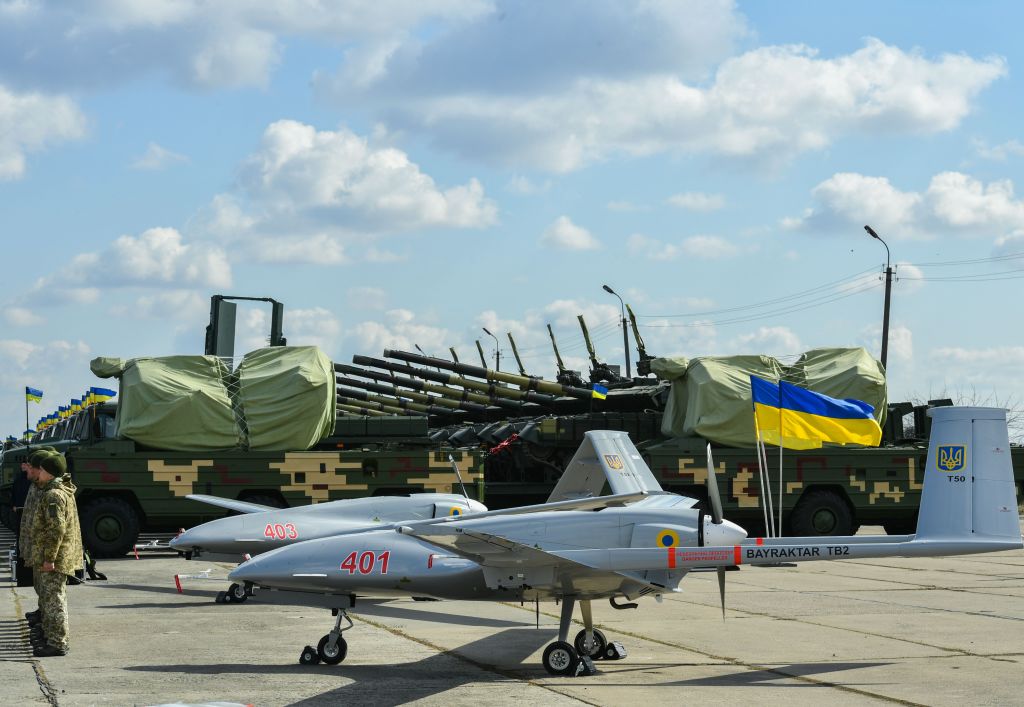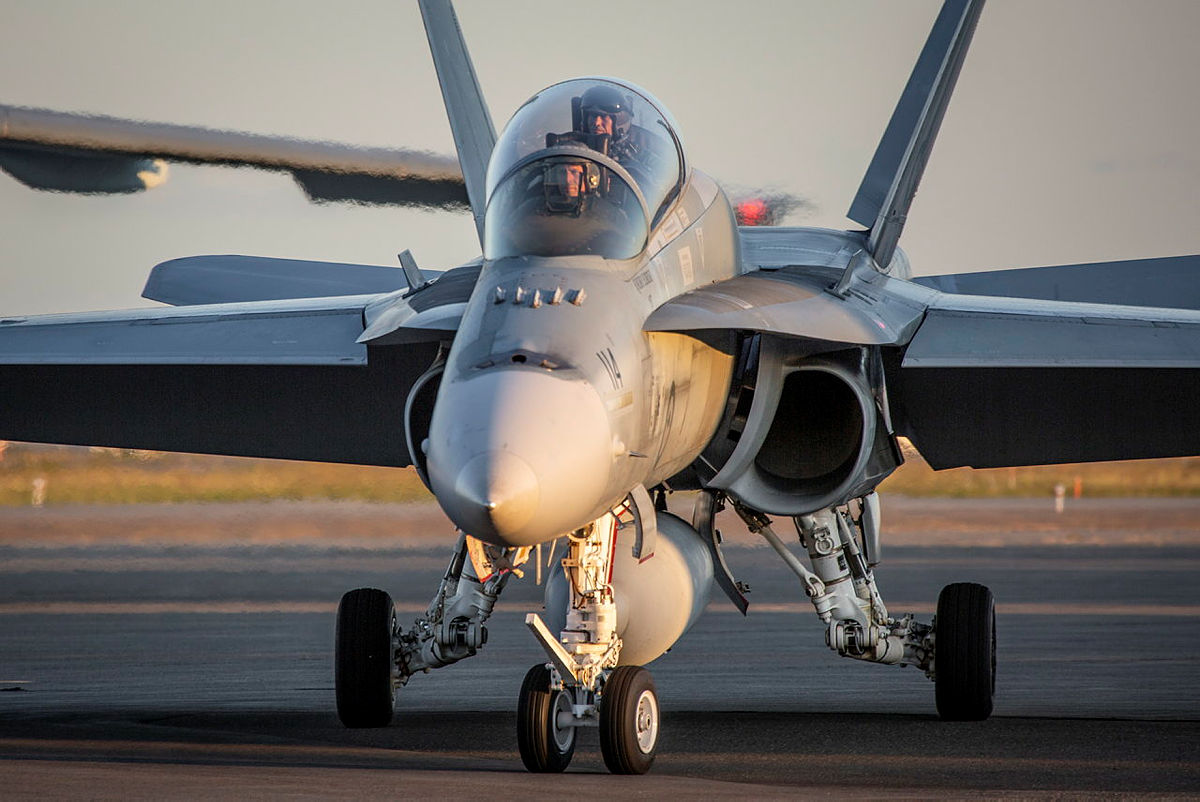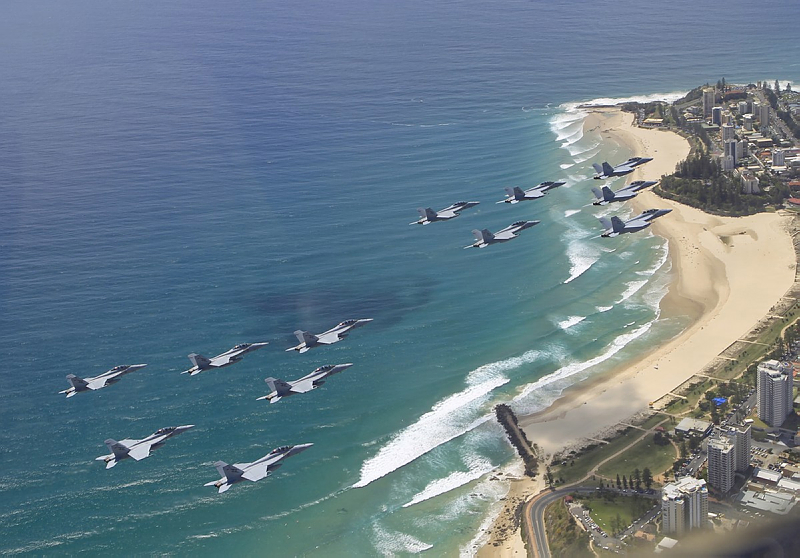Australia should talk to Washington about buying B-2 stealth bombers
China’s recent naval circumnavigation of Australia has highlighted a pressing need to defend Australia’s air and sea approaches more effectively. Potent as nuclear submarines are, the first Australian boats under AUKUS are at least seven years away. Air power is well-positioned to fill the gap in Australia’s long-range strike capability: It has clear advantages over submarines and ships in terms of its responsiveness in the maritime strike role.
But the F-35A and F/A-18F lack the necessary range, and Australia has not fielded a bomber since the F-111 was retired in 2010. No new candidate aircraft has been identified as available for purchase, on a timeline that is relevant, or on a budget within Australia’s means.
Solving this problem requires imagination from Australia as well as its key ally, the US. Fortunately, there is a solution at hand but, like the aircraft itself, it is not easy to detect. As unlikely as it sounds, Australia should pursue America’s B-2A Spirit bomber, and has a narrow opportunity to do so.
Australia, to be clear, would be acquiring the B-2A as a fully sovereign capability, to boost its deterrent and war-fighting capabilities, with China’s strategic challenge primarily in mind. America would also gain by further enabling a close ally to make a stabilizing contribution to the regional balance of power, through a significant augmentation to its air power, alongside the development of undersea and other capabilities via AUKUS.
The B-2A is well suited to meet Australia’s capability requirements in terms of range, payload and stand-alone platform survivability. There are indications that the B-2A is already transitioning to a long-range precision strike role — delivering such weapons as the Joint Air-to-Surface Standoff Missile (Extended Range) with which it was integrated in 2022. Maritime strike was a particular focus of the B-2A’s participation in last year’s RIMPAC exercises, when it demonstrated the use of modified JDAM gravity bombs as low-cost ship-sinkers. These are capabilities the Royal Australian Air Force (RAAF) already fields.
Obviously, Australia would need to clear some major obstacles to acquire the B-2A.
First, the US has never before entertained exporting the Spirit, given its limited numbers (only 18 remain) and proprietary technology. Second, Australia would be concentrating a multibillion-dollar investment into very few platforms, just when the Australian Defence Force arguably needs to pivot away from ”exquisite” capabilities and inject greater mass, depth and risk-worthiness into its order of battle. Third, the B-2A serves the USAF in a nuclear as well as conventional delivery role, which would have to be reconciled with Australia’s prohibition on possessing nuclear weapons. Finally, Australian critics of the Trump administration would pillory such an acquisition as foolhardy, at a time when doubts about Washington’s political reliability as an ally are peaking.
Without dismissing these drawbacks, there is a pathway for Australia to acquire a viable B-2A bomber capability, on a timeline that is relevant to its strategic needs. And the window of opportunity is relatively slim— requiring decisive action by Canberra within the next couple of years.
Why Not Other Aircraft?
What about other options? There are really only three other avenues, all with significant downsides: buying into the US’s future B-21 Raider program, acquiring B-1B Lancer bombers as they are retired from the USAF, or trying to tie into the British-Italian-Japanese GCAP effort.
While it would provide a capability for the long term, the problem with the B-21 option for Australia is that it conflicts with the USAF’s overriding need to recapitalize its own bomber force. It would therefore not be available until well into the 2030s — if at all. Cost is another factor, at an estimated $16-18 billion USD for a squadron of twelve. And while the B-21 remains laudably on track, indeed under-budget in the FY25 appropriations request, the potential for cost overruns and delays remains.
The main advantage of pressing used USAF B-1Bs into Australian service is that the Lancers are flying now and are already configured for anti-ship missions. The major downside is that the RAAF would have to assume the full burden for the B-1B’s sustainment while the USAF pivots resources to the B-21. Designed for an operational lifespan of 8,000-10,000 flying hours, the B-1Bs now average above 12,000 hours because of the aircraft’s extensive use as a loitering close air-support platform in Iraq and Afghanistan, and the USAF has retired them from all but short-duration missions. While statistics on flying hours aren’t publicly available for the B-2A, the USAF has been much more sparing with them than the B-1B. Australia would be investing at the point of sharply diminishing returns.
The GCAP joint venture aircraft, while not a bomber per se, is likely to be large enough to be considered in the long-range strike role. Australian interest in the program is rising and GCAP is likely to be more affordable than the B-21. But it may not be available on a significantly more favorable timeline, and there is a constant concern that the multi-national nature of the program could lead to delays or spiraling costs.
Meanwhile, the Spirit is already on borrowed time in USAF service, as it will be retired (along with the B-1B) in the early 2030s in order to accommodate the transition to the B-21, without expanding the overall size of Global Strike Command. Although a precise date is difficult to identify, provided the B-21 rollout proceeds smoothly, the USAF could potentially start retiring B-2As at the end of this decade without reducing its overall bomber fleet. (While the USAF has previously stated it could keep the B-2As flying into the 2040s, Northrop Grumman’s $7 billion contract for B-2A maintenance and support concludes at the end of 2029.)
Retiring the B-1B and B-2A in parallel (the venerable B-52 will be retained in service) creates an expensive and burdensome disposal problem for the USAF. Framed in this context, an Australian pitch to buy eight or more B-2As could be well received by both the USAF and the Trump administration, which has emphasized the need for stepped-up burden sharing from allies.
How This Could Work
Make no mistake, this would be a costly effort, one that would have to come as part of a significant uplift in defense spending, closer to 3 percent of GDP, up from roughly 2 percent GDP today. But if the government is willing to do that, then there are mutual benefits for both Canberra and Washington.
Australia has upgraded several air bases to support regular deployments of USAF bombers and other combat aircraft, and B-2As have already operated from Australia, albeit on short-term detachments. An Australian base in the Northern Territory was used to support a B-2A strike mission against Houthi targets in Yemen last October, most likely for refueling.
Future B-2A deployments to Australia could be scaled up, to further explore the practical challenges of maintaining and sustaining these aircraft here. Deep maintenance might still have to be done in the US, and Australia would need to support that part of any agreement. But as the USAF transitions towards B-21, Australia could incrementally take on more of the funding for B-2A maintenance, easing the cost on American taxpayers. Assuming some overlap in the sustainment footprint between the B-2A and B-21, the RAAF and USAF could also develop shared support facilities, in Australia, for Spirits transferring into Australian service as sovereign assets, as well as B-21s which the USAF could begin to forward deploy to Australia around the same time. This promises economies of scale, within an alliance framework.
While the B-2A would be a stopgap capability for Australia, a further advantage of operating it is that it would provide the RAAF with a pathway to transitioning to the B-21, if it eventually becomes available in sufficient numbers for the US to consider exporting it to Canberra.
To assuage anti-nuclear concerns in Australia, the systems that allow the B-2A to carry nuclear weapons could be disabled through software changes that conform to RAAF standards. Similarly, adapting the B-2A for anti-ship weapons, like LRASM, could be done without insurmountable delays.
All this would require a major Australian diplomatic effort to persuade Washington that it can be trusted to safeguard such highly prized stealth and other technologies via a foreign military sale. But the precedent created by AUKUS, Australia’s subsequent ITAR carve-outs and the existing, close relationship between the RAAF and USAF would do much to make this transfer practicable.
Yes, it’s wildly ambitious. Yes, the hurdles to making this happen may simply be too many to overcome. But now is the time for Canberra to be contemplating bold moves, and convincing the US to sell the B-2A would transform Australia’s defense posture on a significantly faster timeline — an effort worth pursuing to meet the gathering threats.




